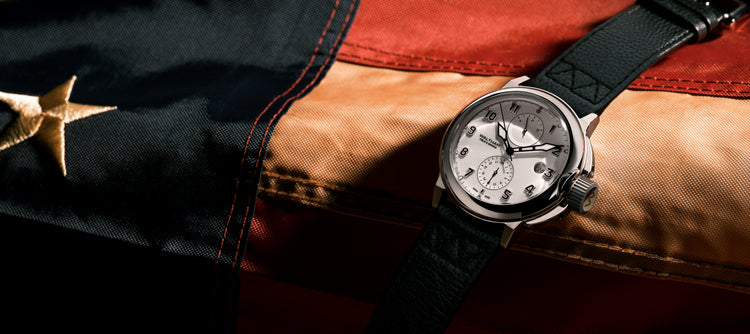
CRAFTING THE AMERICAN DREAM
FIRST AMERICAN WATCH
More than any other brand, Waltham represents the legacy of American industrial ingenuity and innovation. Waltham industrialised watch production and introduced norms and quality standards in the watch industry. The American System of Watch Manufacturing invented by Waltham has shaped how watches are being produced today and has globalised the watch industry.
Since more than one century we design and manufacturing remarkable, meaningful and precise luxury watches. Watches which last for generations and which attests to the self-made success and purpose of those who own them. Distinctive American design, top grade case and movement specifications, flawless finishing, outstanding legibility, superior water-resistance and Swiss made quality define our timepieces.
Crafting the American Dream.
174 YEARS OF EXCELLENCE
Waltham has been the timekeeper of choice for pioneers such as Sir Ernest Shackleton on his trek towards the South Pole, Robert Peary when he conquered the North Pole, Charles Lindbergh on his first non-stop transatlantic flight and Roland Rohlfs on his 34,610ft world's altitude flight record.
Waltham watches have timed the U.S. Army, the world's railways and the most important historical events of the 19th and 20th centuries. Waltham clocks and instruments are found in the most legendary planes and cars of the last century. Today, Waltham combines American ingenuity and design with Swiss manufacturing excellence. It is renown for outstanding craftsmanship, precision and quality. Our timepieces have earned a significant place in watchmaking history and since nearly two centuries they are recognised all over the world for their excellence.
A legacy of greatness.
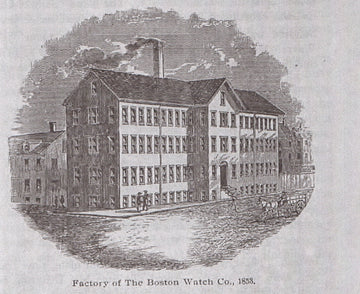
1850
Roxbury, Massachusetts, USA, inspired by Aaron Lufkin Dennison, a visionary genius, the first industrial mechanical watch and clock manufacturer in the world is founded. For the first time, clocks and watches were not produced piece-by-piece and later assembled by individual craftsmen but rather, thanks to interchan geable parts and patented automated, precision watchmakingmachines, they are produced in series.
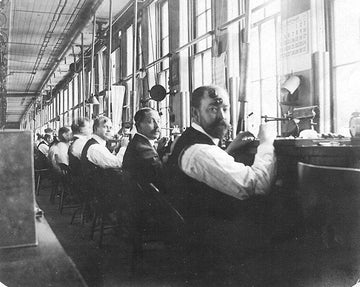
1854
The company moves to Waltham, the town that will give the company its name, and opens a model factory where it employs over 3000 people at the height of its productivity. From 1850 to 1957, over 40 million timepieces are produced, making the Waltham company the world’s leading producer of clocks and watches. The "American system of watch and clock manufacturing" is not the only technique developed in Waltham; it also boasts the forerunner of the "assembly line”. Henry Ford, during a visit in early 1900, is inspired to develop the automated production line for the legendary Model T revolutionising, just as Dennison had for watchmaking, the manufacturing process for automobiles.
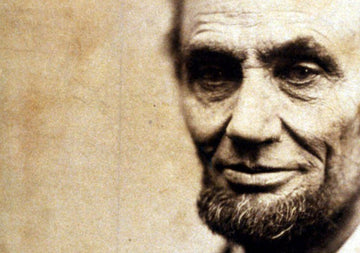
1863
United States President, Abraham Lincoln, becomes one of the first proud owners of the Waltham model 1857 Serial Number 67613, the first industrialized pocket watch. Currently part of a collection at the Smithsonian Institution in Washington, this watch was presented to the President to celebrate the Gettysburg Address and the historical achievement that no one had been able to accomplish before him: the abolition of slavery.
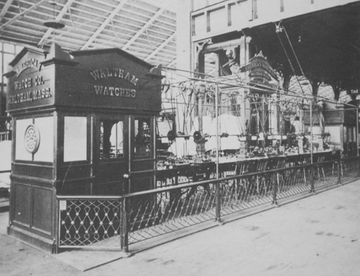
1870
During the Philadelphia Centennial Exhibition in 1876, Waltham presents its novel mechanised watch assembly line. This proprietary technology allowed Waltham to produce affordable, high quality and precise luxury timepieces in large quantities. A first for the watch industry and something no other American or Swiss brand were able to do.
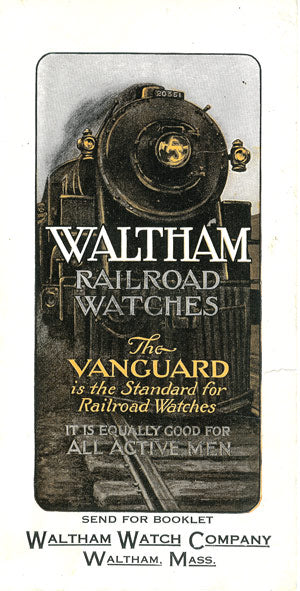
1870
The first Waltham Railroad Watches are manufactured under the brand-name Vanguard: high-precision pocket watches that are selected by railroad companies in 52 countries across the five continent. The Vanguard is the first watch to incorporate the «up and down» power reserve indicator on the dial, a Waltham patent that is still used in hand-wound timepieces. During the golden age of railroads, there were more Waltham watches in circulation around the world than all other brands put together.
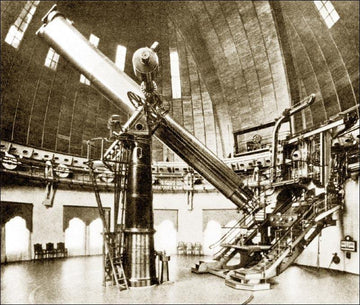
1900
The new century begins and Waltham is in search of the highest possible precision for its clocks and watches. Manufacturers at that time had to turn to astronomical observatories in order to ve-rify and certify the precision of their clockwork. Waltham – one of the first manufacturers in the world - decides to build its own astronomical observatory to ensure the quality of its vast industrial production.
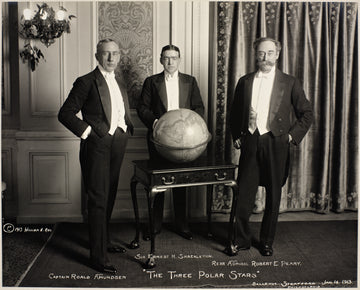
1909
Waltham timepieces and instruments become faithful companions in exploration expeditions and courageous, ambitious endeavors. In January, the Anglo-Irish Explorer Sir Ernest Shackleton treks towards the center of the South Pole, pushing himself further south than anyone had gone before. In the same year the American explorer Robert Peary was the first to reach the geographic North Pole. Waltham accompanied them on there journey: the only pocket watches that could withstand such extreme conditions while maintaining excellent performance. The Marine Chronometers, Waltham Model 1910, featuring an 8-day power reserve, are chosen by the United States, Canadian and British governments for all military and civilian ships. No other factory is equipped to manufacture such high-performance chronometers in such large quantities.
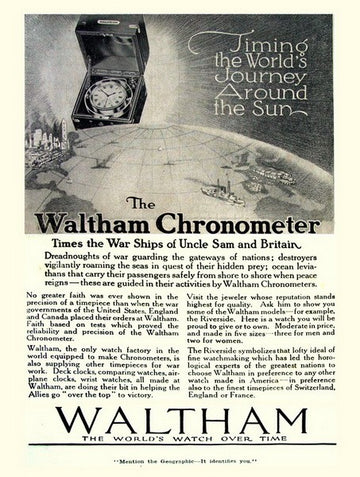
1911
The Marine Chronometers, Waltham Model 1910, featuring an 8-day power reserve, are chosen by the United States, Canadian and British governments for all military and civilian ships. No other factory is equipped to manufacture such high-performance chronometers in such large quantities.
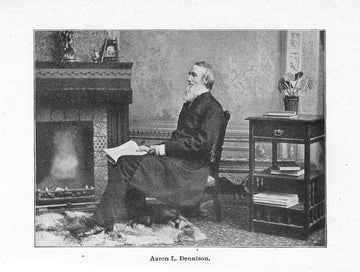
1912 - 1914
British case manufacturer Aaron Lufkin Dennison (one of the three original founders of Waltham) installs Waltham Watch Company movements into his first wristwatch cases made for men. Military wristwatch cases from the Philadelphia Watch Case Company featuring Waltham Watch Company movements make their American market debut.
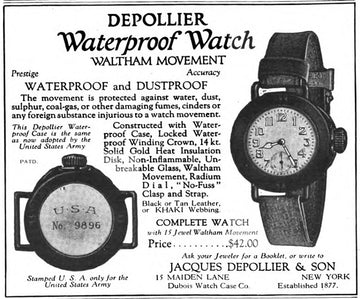
1915
After testing several American made movements watch case manufacturer Charles Depollier announces that Waltham Watch Company movements will be exclusively used in his military watchcases.
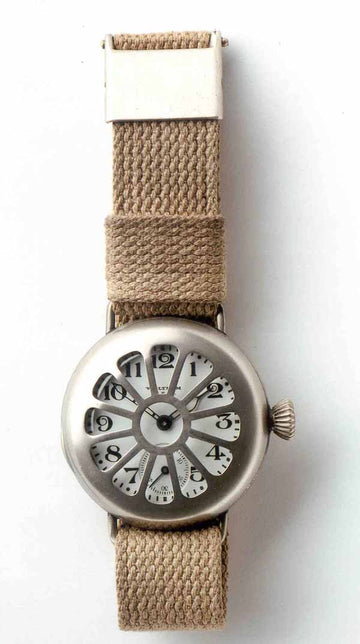
1915
With the onset of the First World War, Waltham manufactures one of the first wristwatches for the American armed forces: more practical in the trenches than pocket watches, they are made even more resistant by the addition of a shrapnel guard to protect the dial crystal. But the war is also an opportunity for Waltham, and the military to experiment with flight: the rudimentary military aircraft used in WWI were fitted with a Waltham XA Type 37 Model aeronautical clock.
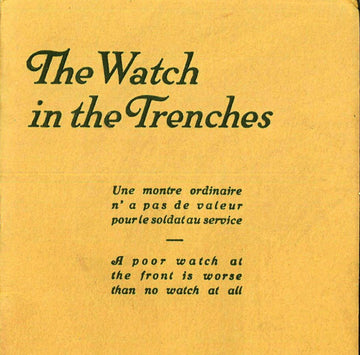
1916
The term "trench watch" is coined in an advertisement published in a British magazine called "the Sketch" featuring a Dennison trench watch case and a Waltham movement.
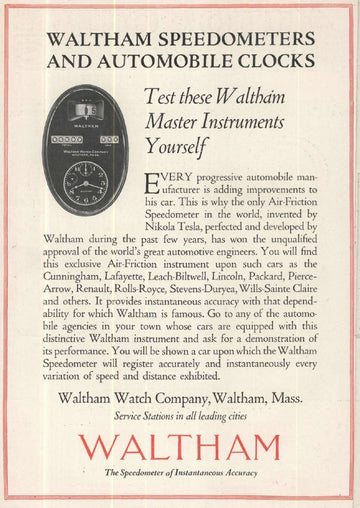
1917
Waltham begins production of clocks and speedometers for automobiles. Precise and reliable even when exposed to strong and continuous vibrations, these instruments were supplied to Ford, Lincoln, Renault, Cadillac, and even Rolls Royce. In the forefront ofthis sector too, Waltham and world-renowned scientist Nikola Tesla patent the first Air Friction speedometer, creating the most precise automobile instrument capable of measuring speed, distance, and time.
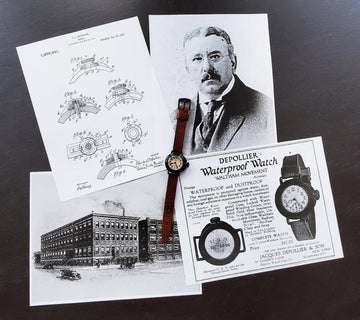
1918
Charles Depollier files the patent for the «double clinched bezel» featured on the Waltham Depollier «KHAKI» & «D-D Utility» Trench Watches. This technology, that is still used today, made the bezel of wrist watches waterproof.Charles Depollier files the patent for the «screw down crown» featured on the Waltham Depollier «Field & Marine» Waterproof Trench Watches. All modern dive watches can be traced back to the technology patented by Depollier for this watch. His patent is still sighted today for modern dive and waterproof case designs. The first generation Waltham Depollier «Field & Marine» Wa- terproof Trench Watch makes its debut.
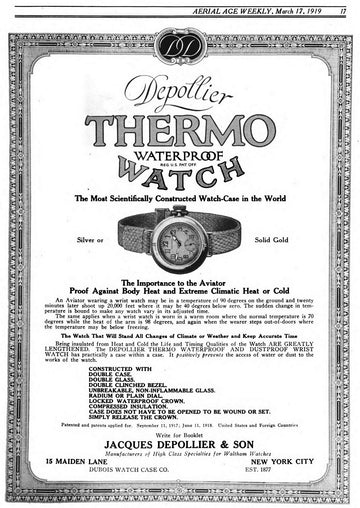
1919
The second-generation Depollier Waterproof Trench Watch with Waltham movement makes its debut. Made in 14k solid gold & sterling silver, known as the Waltham Depollier «THERMO» Wristwatch. It was designed and intended to be used by aviators as a Pilot Watch.Daredevil pilot Roland Rohlfs sets a new flight altitude world record of 34,610 feet while wearing a Waltham Depollier "THERMO" Waterproof Wristwatch. After his flight he wrote a letter to Depollier raving about the accuracy of the movement in the extreme high-altitude cold air environment.
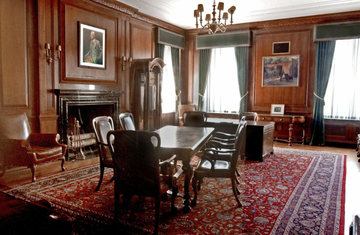
1924
Henry Ford is gifted by Waltham with a grandfather clock that adorned his office until his death in 1947, after which it was donated to the Henry Ford Museum in Dearborn (Michigan).
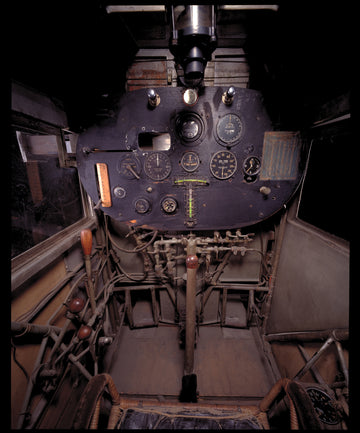
1927
Charles Lindberg, an unknown US Air Mail pilot, has the instrument panel on board his “Spirit of St Louis” modified in order to fit a Waltham XA Type 37 aeronautical clock. Lindbergh boards his plane in New York on May 19 and lands 33 hours later in Paris, marking the first non-stop transatlantic flight.
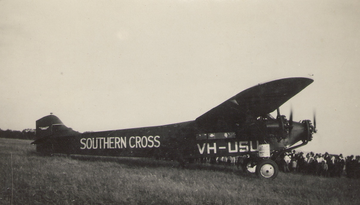
1928
Australian aviation pioneer Sir Charles Kingsford Smith, leaves Oakland, California, to land in Brisbane, Australia, completing the first flight across the Pacific Ocean. The aeronautical clock in his trimotor aircraft, the Southern Cross was a Waltham XA Type 37.
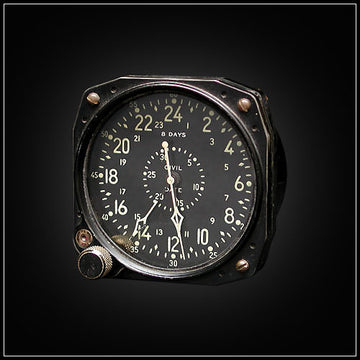
1941
During the Second World War, Waltham’s experience in the aviation sector brings it on board the most emblematic aircraft of the time. These include the F6F Hellcat, with over 12,000 units built from 1943 to 1945 and fitted with the CDIA Model; the B24 Liberator bomber, the most widely produced military aircraft in history; and the legendary P-51 Mustang fighter plane, used until the 1980s.
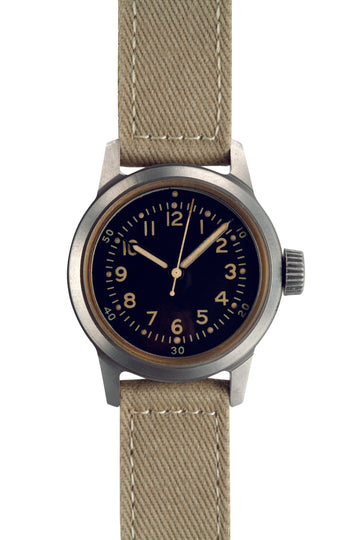
1942
Waltham manufactures the Type A11. This wristwatch is the first to become standard military issue for all the American armed forces: in a waterproof version for the navy, and a dust-proof version for all the other services.
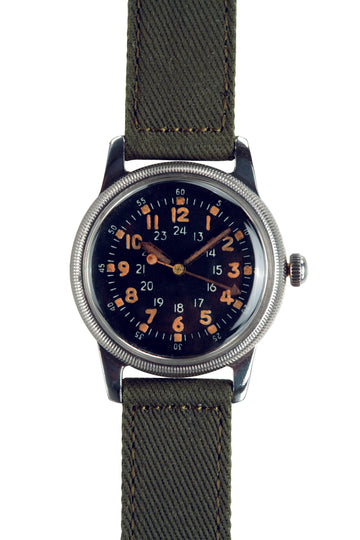
1949
In response to military requirements and in collaboration with the armed forces, in the 1950s Waltham develops the Type A17 Pilot Watch and the wrist compass, standard issue equipment for the US Air Force and Navy.
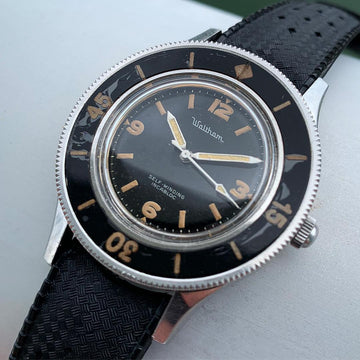
1954
After more than 100 years in the United States, Waltham establishes Waltham SA in Switzerland, the new pulsing center of global watchmaking, where the now Swiss Made brand begins production and forms new cooperations, notably for its famous diver models.
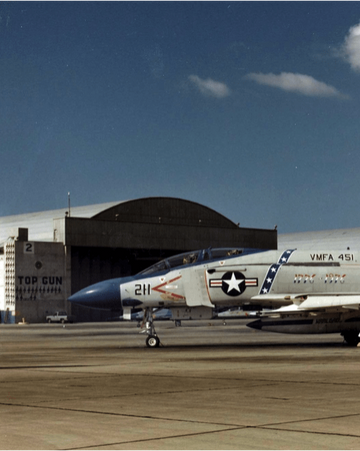
1967
The F4 Phantoms are legends of the US Navy even before they enter into service, setting new records in altitude and speed. They are therefore chosen by the equally legendary Top Gun Fighter Weapons School to train the best pilots in the US Air Force. Produced by Waltham Precision Instruments, their control panels boasted a Waltham Type A-13A, the official aeronautical clock of the US Department of Defense during the Cold War, that was fitted on board all American military aircraft ranging from U-2s to the C-130 Hercules.
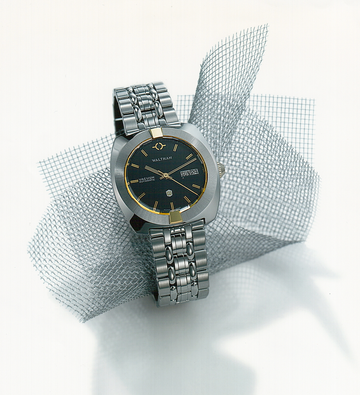
1981
Waltham enters the Asian market at the end of the 1970s with the Vacuum Model, the innovative mechanical wristwatch that works in the absence of atmosphere, and quickly becomes the most popular watch brand in Japan.
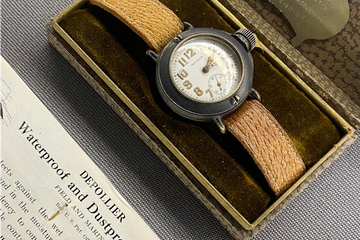
1998
An original Waltham Field & Marine is acquired by the Musée International d'Horlogerie in La Chaux de Fonds. The hall of fame of horology.
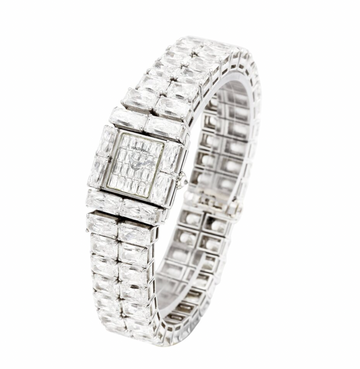
2000
The success on the Asian market is celebrated with the incredible Radiant 2000, a model decorated with over 150 carats of diamonds and considered the most expensive wristwatch of the time.
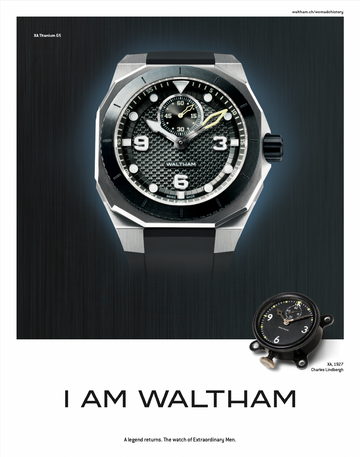
2011
Waltham introduces the Aeronavale collection. Hi-tech, luxury timepieces, encasing manufacture movements, that were directly inspired by the Waltham aviation instruments found in legendary aircraft such as the Spirit of St. Luis and the F-4 Phantom.
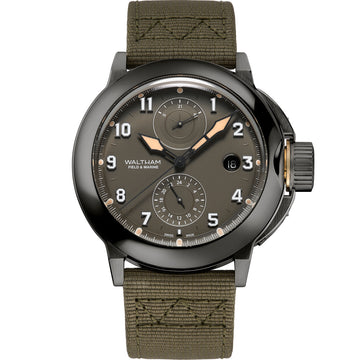
2021
Waltham brings back the Field & Marine, the first waterproof watch, and re-interprets the original 1918 bayonet crown patent. The water-resistance is increased to 1000ft | 300m.
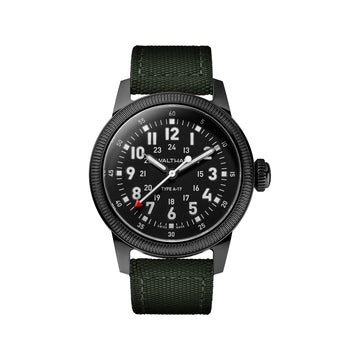
2023
73 years since it entered into service with the USAF, the Waltham Watch Company re-introduces the MIL-W-6433 compliant A17, upgrading its specifications and size to the contemporary "New Generation" standard. With the A17NG, Waltham is now producing again the only historically legitimate American pilot watch.
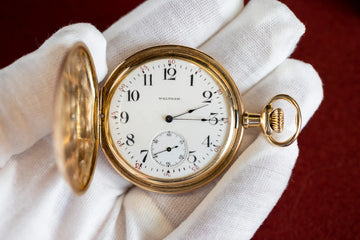
2024
A Waltham gold pocket watch is auctioned for a record-breaking $1.485 Million. The timepiece belonged to John Jacob Astor IV, the richest man in America in the beginning of the 20th century.


